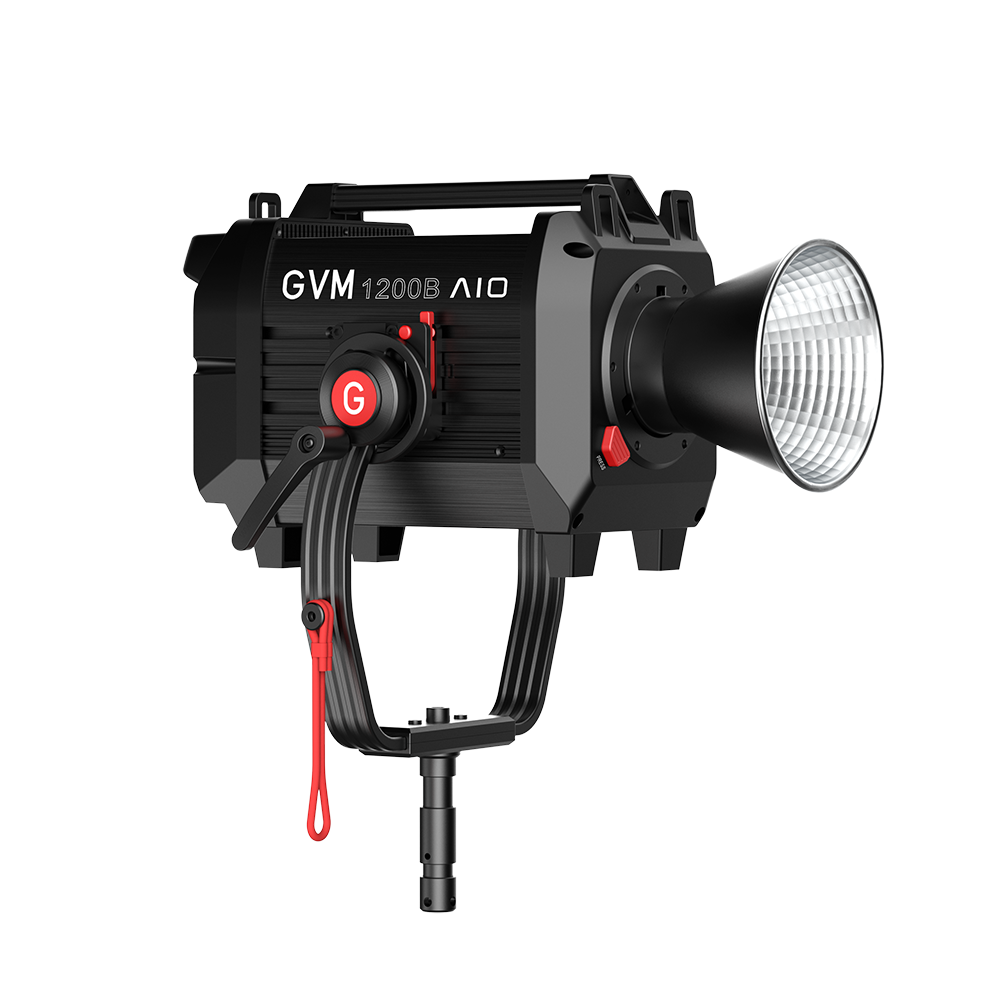Portrait photography is more than just mechanically replicating a person’s appearance; it’s a delicate art that aims to unveil the subject’s inner essence – their character, their emotions, and the unique stories hidden within their soul. A skilled portrait photographer possesses a keen perception of light, understanding its ever-changing nature and transforming it into expressive visual language.
Whether capturing the subtle nuances of natural light or constructing intricate studio lighting systems, the photographer must be able to translate expressions, emotions, and profound meaning onto the photographic canvas. When it comes to studio portraiture, the most telling sign of a photographer’s mastery lies in the artful arrangement and utilization of light.
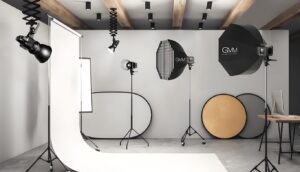
The essence of portrait lighting extends beyond merely illuminating the subject; it involves sculpting their form, revealing their personality, and vividly presenting these vibrant qualities on a two-dimensional plane.
Mastering portrait lighting techniques means imbuing photographs with life, conveying nuanced emotions, and adding depth and dimension to the subject through the contrast of light and shadow. Skilful use of light can separate the subject from the background, creating a more three-dimensional and spatially engaging visual effect.
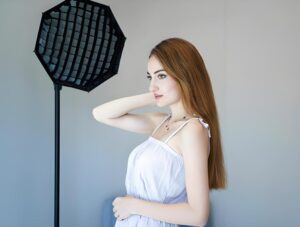
Many photography enthusiasts, and even professional photographers, may question: “I already own a powerful flash system, why should I invest time and money in learning about and purchasing continuous lighting equipment?”
While flash undeniably plays a vital role in many situations, continuous lighting, especially LED continuous studio lights, offers unique advantages unmatched by flash. It provides a more intuitive, controllable, and creative way to shape light, helping you master the interplay of light and shadow and tell more compelling stories.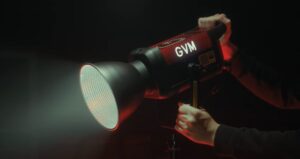
Beyond the Burst of the Moment: The Allure of Continuous Lighting
Flash is undoubtedly a powerful tool, capable of freezing fleeting moments, overpowering strong sunlight, and delivering bursts of intense light. However, continuous lighting provides a different kind of power – the power to control light, to anticipate its effects, and to shape the mood of your portraits with precision.
Think of it this way: Flash is like a sudden exclamation point, while continuous lighting is like a carefully crafted sentence. Both are effective, but they serve different purposes. With continuous lighting, you can clearly see how the light falls on your subject before pressing the shutter. This “what you see is what you get” characteristic offers invaluable benefits for photographic creation:
- Real-Time Light Sculpting: Continuous lighting enables you to adjust the position, angle, and intensity of the lights in real time, and instantly observe how these adjustments affect your subject’s facial features. Like a sculptor, you can use light to meticulously mold the subject’s image, accentuating strengths, concealing flaws, and creating the most desirable visual effect. For example, if you want to create a soft and dreamlike atmosphere, you can place a softbox in front of the subject on their side, and gently reduce the light intensity, observing the changes in light and shadow until you achieve the desired result.
- Precise Color Control: Adjusting the color temperature of continuous lighting is as simple as adjusting the color balance in Photoshop. You can quickly fine-tune the warmth or coolness of the light to harmonize with the ambient light or create a specific mood. For instance, when shooting a warm-toned portrait, you can set the color temperature to a lower value, giving the image a warm and romantic feel.
- Ease of Learning and Mastery: For beginner photographers, continuous lighting is undoubtedly a more accessible choice. Because you can directly observe the effects of light and shadow, beginners can more easily understand the nature of light, grasp the fundamentals of light and shadow, and quickly improve their lighting skills. You can repeatedly adjust the light’s position and intensity, observe the changes in light and shadow, and gradually understand the different effects produced by different lighting arrangements.
- Perfect Integration with Video Shooting: Continuous lighting is an indispensable tool for video shooting. Unlike flash, continuous lighting provides stable, flicker-free light, ensuring the quality of video footage. Whether shooting interviews, product demonstrations, or short films, continuous lighting provides you with a reliable and consistent light source.

The Core Principles of Portrait Lighting: Key Light, Fill Light, and Lighting Ratio
Whether using continuous lighting or flash, the core principles of portrait lighting remain the same. You need to understand the concepts of key light, fill light, and lighting ratio, and skillfully use them to create the desired light and shadow effects:
- Key Light: The most important light source in portrait photography, determining the overall brightness of the image and shaping the subject’s primary form. The key light’s position, angle, and intensity significantly impact the final result.
- Fill Light: Primarily used to soften the shadows produced by the key light, reducing the overall contrast of the image and making the subject’s facial contours clearer. The fill light’s position and intensity need to be adjusted based on the specific situation to achieve the ideal balance of light and shadow.
- Lighting Ratio: The ratio between the intensity of the key light and the fill light, which determines the overall contrast of the image. A higher lighting ratio creates a stronger contrast between light and dark, suitable for expressing personality and strength. A lower lighting ratio makes the image softer, suitable for expressing femininity and elegance.
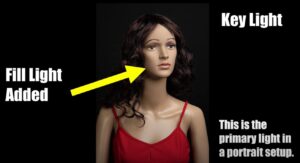
With continuous lighting, you can more easily control these elements and observe their effects on the image in real-time, allowing you to create more precise light and shadow effects that better match your intentions.
Classic Portrait Lighting Patterns: Building the Foundation of Light and Shadow
Mastering classic portrait lighting patterns is an effective way to improve your photography skills. These patterns are built on a deep understanding of light and shadow, enabling you to better shape your subjects and create various emotional atmospheres:
- Butterfly Lighting: A classic portrait lighting pattern that casts a symmetrical, butterfly-shaped shadow under the subject’s nose, highlighting the symmetry of the face and creating an elegant and glamorous atmosphere.
- Loop Lighting: A variation of butterfly lighting that slightly moves the key light to the side, creating a loop-shaped shadow under the subject’s nose, softening the facial contours.
- Rembrandt Lighting: A dramatic portrait lighting pattern that casts a triangle of light on the cheek of the shaded side of the face, highlighting the subject’s personality and strength.
- Split Lighting: A minimalist portrait lighting pattern that divides the subject’s face into two parts, one in the light and one in the shadow, creating a mysterious and stark atmosphere.
- Broad Lighting: Placing the key light on the side of the face closest to the camera, making the face appear wider.
- Short Lighting: Placing the key light on the side of the face furthest from the camera, creating a slimming effect.
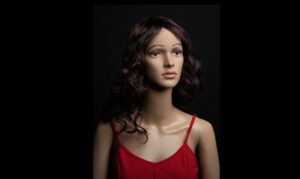
Choosing the Right Continuous Studio Lighting Equipment: Key Considerations
When choosing continuous studio lighting equipment, consider the following key factors:
- Adjustable Brightness: The ability to precisely adjust brightness is crucial for controlling lighting ratios and exposure.
- Adjustable Color Temperature: The ability to adjust the warmth and coolness of the light to adapt to different shooting scenes and skin tones.
- Accessory Compatibility: The ability to accommodate various light modifiers such as softboxes and umbrellas to achieve different light and shadow effects.
- Reliability and Durability: Choose reliable and durable lighting equipment that can ensure long-term stable operation.
Considering these factors, a light like the GVM SD200B, with its dimmable brightness, adjustable color temperature, Bowens Mount compatibility, and durable construction, could be a solid choice for your studio lighting needs.
Continuous Lighting vs. Flash: Leveraging Strengths, Avoiding Weaknesses
Flash excels at freezing motion, overpowering sunlight, and providing burst light, while continuous lighting excels in controllability, real-time performance, and ease of use. In practical shooting, you need to flexibly choose the appropriate lighting method based on specific scenes and shooting needs.
If you are in a complex lighting environment and need to quickly capture shots, flash may be a more suitable choice. However, if you are in a controllable studio environment and need to carefully shape the light and create a specific emotional atmosphere, then continuous lighting is undoubtedly the more ideal choice.


